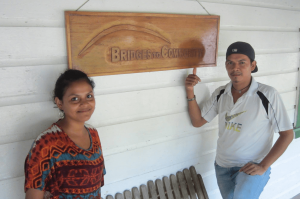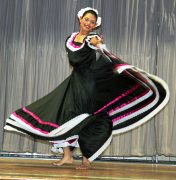Studying international development can be very disheartening. The inherent limitations with global service learning, the intractable problems of poverty, corrupts governments, decades of failed projects, etc. makes it feel, at times, that there is nothing we can do. Yet despite these overwhelming challenges, I am actually more optimistic now than I was before taking this class. Non-profits such as Bridges to Communities and Compas de Nicaragua prove that there are successful and effective models for community development.
 I am very excited to work with Bridges to Community this winter and see how their organization operates firsthand. By working with communities over the course of five years Bridges can both alleviate immediate needs and lay the foundations for sustainable change. For example, building latrines, constructing and repairing houses, installing more environmental and safer stoves, etc. responds to existing community needs. Bridges also does projects—like the chicken initiative we will be working on—that don’t respond to a need per se but will improve quality of life over the long-term. Moreover, Bridges builds leaderships structures within communities so that development can continue even when Bridges no longer has a physical presence. According to their website, “Lasting impacts on individuals and communities can be sparked during a Bridges experience but must be sustained afterwards. We hope to inspire a long-term commitment in our communities.” Finally, Bridges does not work alone. They harness the resources and manpower of short-term service trips to make their projects happen. Since Bridges has a longterm presence in the communities, however, they avoid the problems inherent in short-term trips. They are supplementary to rather than the backbone of their organization.
I am very excited to work with Bridges to Community this winter and see how their organization operates firsthand. By working with communities over the course of five years Bridges can both alleviate immediate needs and lay the foundations for sustainable change. For example, building latrines, constructing and repairing houses, installing more environmental and safer stoves, etc. responds to existing community needs. Bridges also does projects—like the chicken initiative we will be working on—that don’t respond to a need per se but will improve quality of life over the long-term. Moreover, Bridges builds leaderships structures within communities so that development can continue even when Bridges no longer has a physical presence. According to their website, “Lasting impacts on individuals and communities can be sparked during a Bridges experience but must be sustained afterwards. We hope to inspire a long-term commitment in our communities.” Finally, Bridges does not work alone. They harness the resources and manpower of short-term service trips to make their projects happen. Since Bridges has a longterm presence in the communities, however, they avoid the problems inherent in short-term trips. They are supplementary to rather than the backbone of their organization.
 Compas de Nicaragua takes a different approach. Rather than seeking to inspire change in different communities, they are based exclusively in La Primavera, Managua. This type of localized non-profit may be more likely to inspire greater community involvement and collaborative projects. Moreover, Compas supports “Women in Action” so they are further localizing their efforts. Yet since women are often the center of communities and families in Nicaragua, improving their lives improves the lives of everyone. “Women in Action” provides microloans, facilitates sponsorships for children so they can get an education, hosts before and after school programs, has a computer lab, has cultural dance troupes, teaches women to make gourds and bags to sell, etc. Similar to Bridges, global service learning trips do not form the foundation of Compas. Rather, foreigners provide support by buying gourds and sponsoring children without directly interfering and imposing their own solutions on the community.
Compas de Nicaragua takes a different approach. Rather than seeking to inspire change in different communities, they are based exclusively in La Primavera, Managua. This type of localized non-profit may be more likely to inspire greater community involvement and collaborative projects. Moreover, Compas supports “Women in Action” so they are further localizing their efforts. Yet since women are often the center of communities and families in Nicaragua, improving their lives improves the lives of everyone. “Women in Action” provides microloans, facilitates sponsorships for children so they can get an education, hosts before and after school programs, has a computer lab, has cultural dance troupes, teaches women to make gourds and bags to sell, etc. Similar to Bridges, global service learning trips do not form the foundation of Compas. Rather, foreigners provide support by buying gourds and sponsoring children without directly interfering and imposing their own solutions on the community.
When Michael Bourdreau visited our class, he talked about the Nicaraguan values of family and finding happiness in living rather than materialism. Close-knit community organizations can build upon these existing values to create sustainable change. Compas and “Women in Action” are not just about increasing economic opportunities but also preserving cultural traditions and building the strength of the community.
Both Bridges to Community and Compas de Nicaragua focus on creating change from the ground up. While short-term service trips and foreign volunteers support their efforts and create opportunities for cross-cultural exchange, at the heart of their organizations is the communities they are working with.
